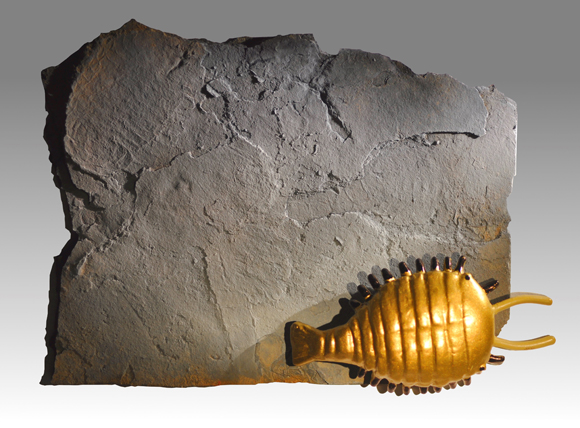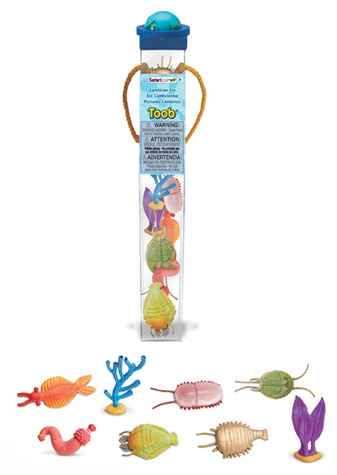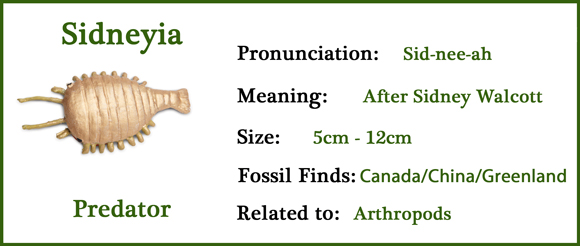Safari Ltd Models Help With Scientific Research
Cambrian Toob Models Help Scientists
Safari Ltd introduced into their range of prehistoric animal models a tube (toob) of Cambrian lifeforms, a set of eight figures that represent different types of creature that existed more than 500 million years ago. This skilfully crafted and well-designed range of replicas has proved to be extremely useful for researchers as they study the enigmatic animals that existed during the Cambrian and the preceding geological age, the Ediacaran.
Sometimes it can be challenging for scientists to illustrate their fossil finds. Many fossil specimens can be difficult to make out to the untrained eye and a model of the animal placed in close proximity to the fossil, can help to demonstrate what sort of creature the fossil represents. A few days ago, Everything Dinosaur supplied a Safari Ltd Cambrian Toob to a researcher at Bristol University who wanted to use one of the models in this set for just such a purpose – to illustrate the ancient Cambrian arthropod Sidneyia.
The Cambrian Fossils Next to a Model of Sidneyia

Picture credit: Bristol University/Everything Dinosaur
Ancient Fossils from the Far North of Greenland
The slab of rock (above) comes from northern Greenland, it contains a preserved impression of the Cambrian arthropod known as Sidneyia. At around six centimetres in length, the Wild Safari Prehistoric World Sidneyia replica provides a useful scale. The scientist explained to Everything Dinosaur that the rock comes from a locality called Sirius Passet and it was collected on a recent expedition to this remote part of the world during the summer.
The fossil site was discovered in 1984 by a field team from the Geological Survey of Greenland. Several thousand specimens have been collected over the years, the Sirius Passet locality is a Cambrian Lagerstätte, a very fossil rich area that preserves marine fauna from the, as yet, not formally defined “Stage 3” of the Cambrian geological period. The Sirius Passet biota is often compared to the biota associated with the Burgess Shale deposits of British Columbia, but the Greenland rocks are at least ten million years older and therefore more comparable in age to the Maotianshan shales from Chengjiang, from Yunnan Province in south-western China.
The Safari Ltd Cambrian Toob Models
Safari Ltd Cambrian Toob Contents
The eight colourful figures in the Safari Ltd Cambrian Toob represent a variety of different marine organisms, including the nektonic predator Anomalocaris, Vauxia (a sponge) and the bizarre worm-like creature Ottoia. Several arthropods are featured too, including Sanctacaris, Sidneyia, Naraoia and a Trilobite (Tricrepicephalus).
Sidneyia from the Safari Ltd Cambrian Toob
Picture credit: Everything Dinosaur
Believed to have been a predator feeding on molluscs and other hard-shelled creatures, Sidneyia probably scuttled along the sea floor (benthic). It was named after Sidney Walcott, the eldest son of Charles Walcott, the American scientist who discovered the Burgess Shale deposits in 1909. The scientist who requested the Safari Ltd Cambrian Toob wrote to say that the rock slab contains three arthropods, a well-preserved Sidneyia, a well-preserved, undescribed arthropod that they were working on and another indeterminate arthropod.
To view the Safari Ltd Cambrian Toob and the other figures in this range: Safari Ltd: Wild Safari Prehistoric World.



